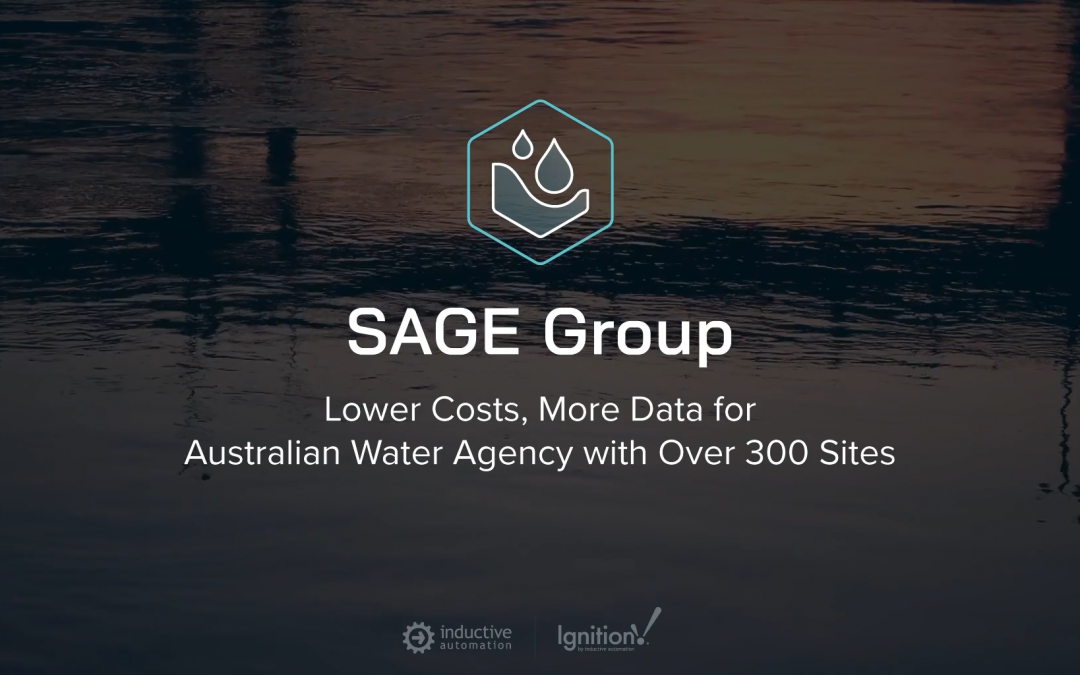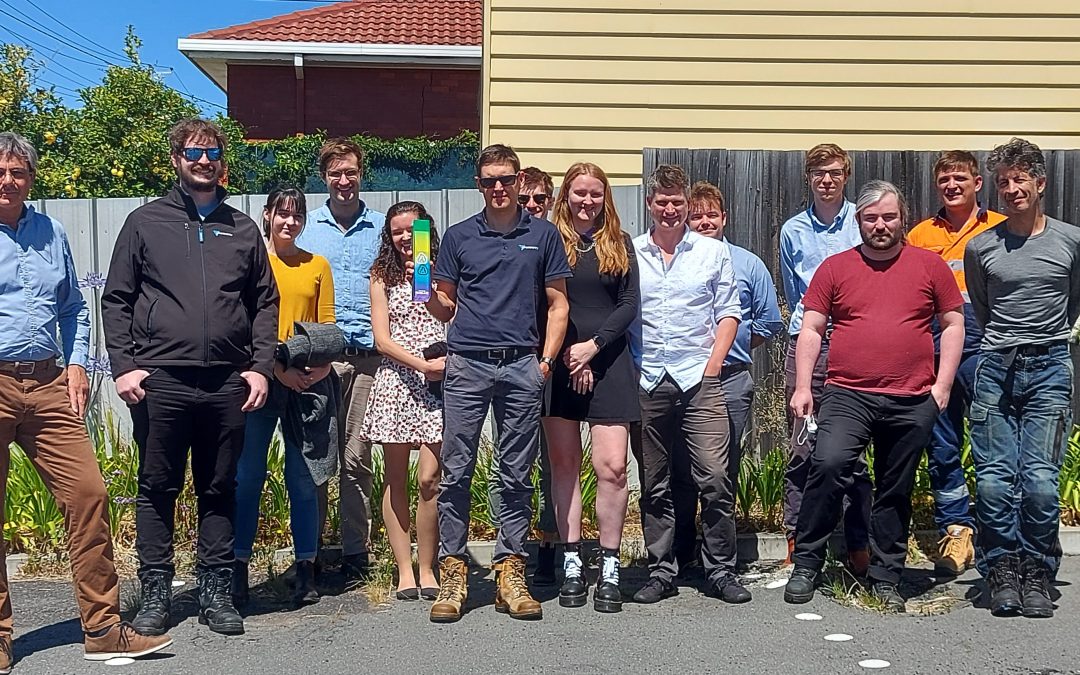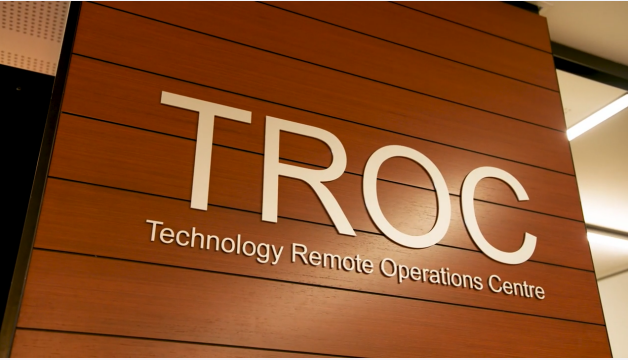Students Expand Knowledge With Custom Hybrid Engine and Ignition Platform
The students on the Monash High Powered Rocketry Team set their aim high — 10,000 feet high.
The multidisciplinary student-led Monash High Powered Rocketry (MHPR) team from Monash University in Melbourne develops, designs, and launches sounding rockets. The students focus on a range of disciplines across avionics, payload, propulsion, flight systems, dynamics, aerostructures, business, finance, and safety.
Over two years, as part of Project Zenith, the students in MHPR have designed and manufactured the Solaris MkII hybrid rocket engine, targeting a 10,000-foot apogee on its launch. Recently, the MHPR team took Project Zenith across the globe to Midland, Texas for the International Rocket Engineering Competition (IREC). Throughout the rocket’s development and during the competition, MHPR leveraged Ignition — the industrial integration platform for SCADA, HMI, IIoT, and more — to ensure a successful launch.
Held Back by Rigidity
Project Zenith is MHPR’s most ambitious project to date, challenging the students to develop a hybrid engine from scratch. This necessitated a complex array of hardware and software requirements, leading the team to branch out into new technologies for fluid systems and air brakes.
While MHPR made great strides with constructing the engine and circuit boards, progress was initially much slower for the digital aspects of the project. Originally, Solaris MkII’s software used an entirely text-based HTTP model, which the team found both unpredictable and inflexible. “We were using more general web development technologies such as Svelte or TypeScript, and we found that these systems were very rigid,” said Rachit Tamrakar, a student on the MHPR avionics team. “We couldn’t change things, and it was quite hard to make things exactly how we wanted them.”
This lack of flexibility stymied Project Zenith as a whole. “It was quite a clunky system that required a lot of effort to make small changes with, which is something when you’re developing a new engine is going to happen a lot as you add new systems and change new systems,” said Tom Russell, Team Lead at MHPR.
Switching to Ignition
Understanding that the team required a more robust solution for the competition, Ben McDonald, an Avionics Engineer at MHPR, contacted Inductive Automation’s Educational Engagement Program, which provides free Ignition licenses to qualifying educational institutions as a means to introduce students to industrial controls. “I had familiarity with how well maintained and developed the software was, so I knew that if I could implement this with our current system, that we would have a very reliable performance system,” he said.
“I was very excited when Ben contacted Inductive Automation’s education team because I had worked with Ignition previously in the past, and I know that it would have been such a step up from the traditional web development that we were doing before,” Tamrakar said. “I could see that it had huge potential.”
Ignition allowed MHPR to iterate their system faster and more reliably as Project Zenith progressed. “When we started this project two years ago, we had no idea what we were doing. And through all of our iterations, we slowly developed what has become an incredibly complex and reliable system,” said Jack Bradley, Avionics Engineer at MHPR.
Ignition’s intuitive drag-and-drop interface meant that students could start working with the platform after minimal training. And for more advanced functions, the students found Ignition’s capability to embed Python code and act as an MQTT client to be extremely valuable. For offboard systems, MHPR is pushing data through topics into an MQTT broker as the main form of communication on the ground. From there, each MQTT topic is fed back into Ignition for data management.
Tamrakar’s role, in particular, was to develop the Ignition backend that controls the rocket’s offboard systems. “Ignition made it very, very simple,” he said. “All I needed to do was write a few MQTT topics and write a few endpoints for those, and then Ben could just go into Ignition, into the Perspective designer, and attach some buttons, and all of a sudden we could test our backends within seconds.”
“Ignition makes interacting with our system extremely easy. It gives us a very user-friendly frontend and a very modular frontend as well, which has been very important as the project has adapted over time,” said Bradley.
This adaptability became vital as the students emphasised safety and reliability when implementing the Ignition system. “We’re controlling what the entire rocket rides on, literally,” said Tamrakar.
“Our engine inherently is a very unsafe system where we’re working with nitrous oxide that is 50-60 bars on some days,” said McDonald. The team needed to be confident that when they triggered a valve, it would, in fact, open or close without delay. “Once we switched over to Ignition, we never had any sort of delay, and the safety of the system inherently improved a lot.”
Launch Day
The actual launch during competition is always a high-stress situation. “In terms of visualisation, I aimed to develop a frontend that was very simple to use on the day,” said McDonald. He opted to include all launch control functionality on a single screen to minimise unnecessary navigation. “Then from that screen, we’ve got all of our individual devices and other screens where you could debug and do testing on the functionality, prelaunch.”
Ignition’s Perspective Module allowed MHPR to visualise all of their data streams for critical measurements like pressure, temperature, and thrust as the engine was firing. “We wanted to see all these things in real time, and Ignition really enabled that,” said Tamrakar.
“What impressed me the most with Ignition was how easy it was to sort of get that vision of what we wanted in the UI actually on a screen,” said Russell. “As a launch operations lead, my job was to sort of monitor the control team as well as the pad team to make sure things were going right and quick glances at the screen was always part of my job. Having that information displayed in the best way possible was really important.”
MHPR’s Ignition system made great use of embedded web pages, allowing the team to remain on one screen while viewing another page as it displayed their data logging in real time. “We have a database that has a web viewer, and we were able to embed that web viewer as well as our IP cams footage within pages in our Ignition project,” explained Tamrakar. “For us, that was a really powerful feature.”
In 2025, MHPR won the Jim Furfaro Award for Technical Excellence at IREC and finished second in the student-researched and developed (SRAD) 10,000-foot category at IREC.
“Actually seeing it launch and watching everything work as we intended, it was an amazing feeling. It was incredible to watch,” said Tamrakar. “Seeing our rocket launch for the first time in Bendigo was one of the most surreal experiences of my life. And then again, when we went to America and seeing it launch using the systems that we built, using Ignition, using all of our knowledge, being in the team, seeing all that hard work culminate and pay off in this one launch was one of the best experiences of my life.”
Further Refinements, Fresh Perspectives
The ease of iterability meant that MHPR could design the system with future students in mind. “We’re not trying to stop at Solaris MkII,” said Tamrakar. “We want to go to Solaris MkIII, Solaris MkIV.”
Ignition’s data collection capabilities have proved crucial for the team as they continue to improve the rocket and launch setup. “As a student team, a lot of what we do is research,” said Bradley. “And being able to collect high-frequency data is extremely important for analysing the performance of our engines.”
As Project Zenith progresses, the students in MHPR plan to leverage Ignition’s inherent interoperability, since the platform is built on open standards. “We’ve got really big plans to integrate all of our other ground systems from different projects from the onboard rocket that also have separate ground stations. We have a vision where we can integrate all of these different systems into just this one ground station, make that ground station redundant, and then our team has a very robust platform that we can keep building on as the team moves forward,” said McDonald.
The MHPR team is excited to take the knowledge they’ve gained from Project Zenith outside of the classroom as well. “Using Ignition has kind of changed my perspective on what types of engineering work there really is out in the field. It’s not always just programming or routing a PCB. There’s engineering positions where you’re doing visualisation of data,” said McDonald. “Ignition has opened my eyes to a very different field of engineering compared to what we do usually in classes at university.”
As Russell summed it up, “Our vision is about pushing the boundaries of space technologies in Australia and inspiring a passion in the next generation.”
Monash High Powered Rocketry (MHPR) is a student team at Monash University revolutionising student rocketry in Australia by developing innovative space technologies, fostering collaboration, and igniting passion in future generations through outreach. With a team of over 100 members, MHPR actively competes in both the International Rocket Engineering Competition (IREC) and Australian Universities Rocket Competition (AURC). The design and manufacturing of almost all components of these rockets are done in-house by students, including all airframe components and many flight computers.

Sage Automation Discovery Gallery 2022
Lower Costs, More Data for Australian Water Agency with Over 300 Sites PROJECT SUMMARY: A regional municipal council has implemented the next generation of remote telemetry monitoring and data-driven decision-making. This represents a significant step for the water...

Cromarty Tasmania Fire Brand Award Winners
The purpose of the project was to develop a DNV-GL approved Ship Integrated Management System (SIMS) to manage data from various inputs on the ship and present information in a consistent manner on operator workstations distributed throughout the vessel.

BHP’s Fire Brand Winning Project for TROC Center.
BHP's award-winning Ignition SCADA implementation improved their Alarm Management System by bringing all the information to one 'Single Pane of Glass' This project is a high-performance human-machine interface (HMI) which assiststechnicians at BHP’s Technology Remote...

The Integration Group of Americas (TIGA) – Case Study
TIGA utilised Perspective, Edge, and MQTT to bring significant cost savings for WaterBridge midstream water management company.

Dublin Airport – Baggage Handling System
Baggage-Handling System Upgrade Inspires Future Projects New SCADA System is Open, Flexible, and Easy to Expand Dublin Airport is the 11th-busiest airport in the European Union. More than 31 million passengers used this international airport in 2018 — a record for...
Your Coffee – A Case Study
Bringing together the online sales ordering process directly through to the factory floor. YourCoffee is Australia’s leading specialty contract coffee roaster. Partnering with businesses of all sizes, from boutique coffee operators to national retailers they deliver...


Recent Comments